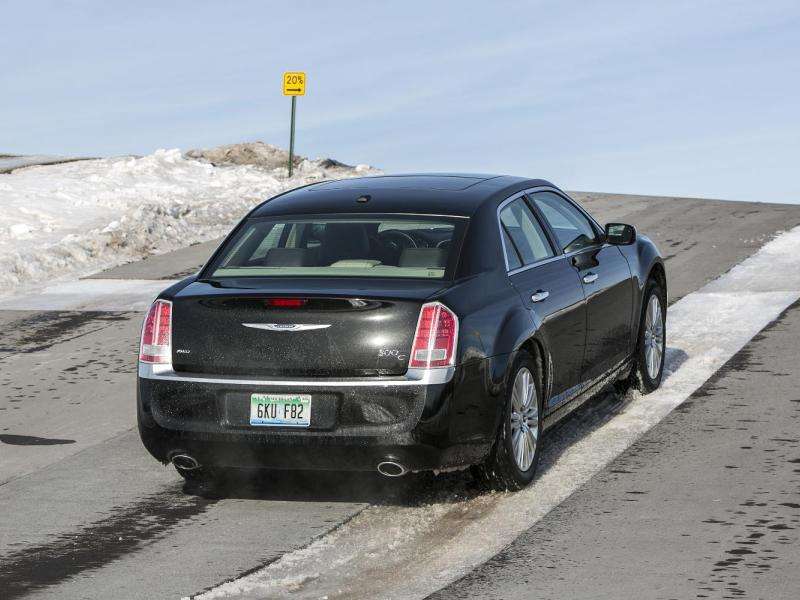Recent Articles
Popular Makes
Body Types
2014 Chrysler 300C Road Test & Review
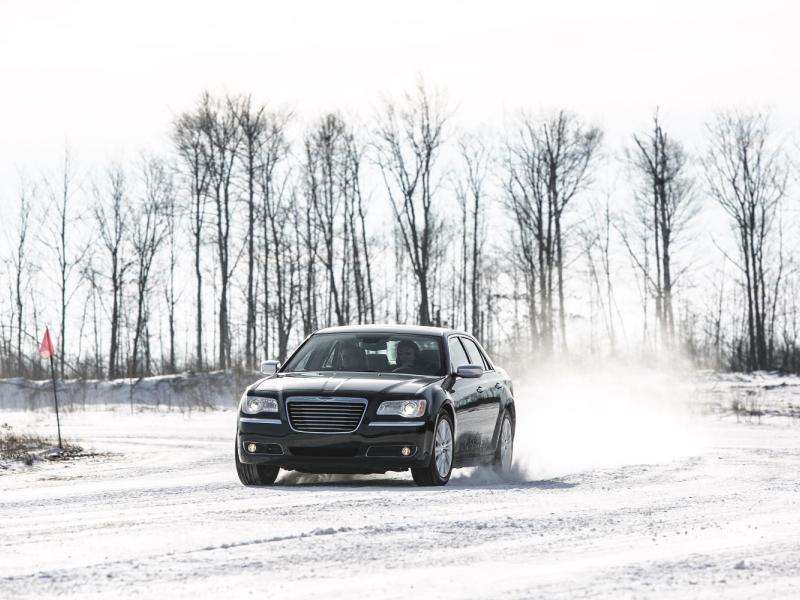
There was a time when V8-powered rear-drive four-door sedans like the Chrysler 300C ruled the American road. Powerful, spacious, and capable of gobbling up miles and miles and miles of highway in one great big bite, these were the de-facto standards of American motoring—until the various and sundry fuel crises stepped in to throw salt in their game.
People are so fickle—give them a reason to look in another direction, and they’ll turn their back on you so quickly, you’ll wonder if you were ever loved at all. And so it came to pass, the large rear-drive V8-powered sedan came to represent everything wrong with the American auto industry.
And yes, we’ll admit the genre did do its part to contribute to that loss of favor. Large also means takes up a lot of space, and powerful (back then) also meant “consumed a lot of fuel”. Not a very good look when people are literally lining up and hoping to get gasoline. Eventually though, the crises subsided, technological breakthroughs made it possible to have a large rear-drive car with both a powerful engine and reasonable fuel economy, and so the large rear-drive four-door sedan is now making a bit of a comeback.
Arguably the model responsible for proving what was possible in that regard is the Chrysler 300. Taking advantage of the relationship Chrysler had with Daimler-Benz at the time, the underpinnings from the W210 Mercedes-Benz E-Class models (offered between 1995 and 2002) were used as the foundation for the model (as well as the Dodge Charger and the Dodge Challenger). This gave the 300C terrific road manners in addition to everything else.
When the model debuted in 2005, with old-school styling, a brace of powerful, yet fuel efficient engines, room for the entire family, and a delightful driving experience, a large, rear-drive V8 powered sedan had people lining up once again—but this time to buy one of the cars.
2014 Chrysler 300C Road Test & Review: Models & Pricing
As the 300 series cars represent Chrysler’s flagship models, regardless of the version you choose, you’ll get a luxuriously outfitted ride. For the 2014 model year, Chrysler is offering the 300 in five trim levels. These are the $30,895 300; the $34,230 300S; the $37,820 300C; the $42,180 300C John Varvatos Luxury Edition; and the $45,900 300 SRT.
Standard features include; a set of seventeen-inch alloy wheels (unless you go all-wheel drive, then you’ll get nineteen-inch wheels). You’ll also find automatic headlights and heated exterior mirrors, along with keyless entry and pushbutton start.
An auto-dimming interior rearview mirror, cruise control, an 8.4-inch central touchscreen interface for comfort and convenience functions, a dual-zone automatic climate control system, and heated front seats with leather upholstery for all four are all included as well.
The driver gets an eight-way power adjustable seat and a tilt-and-telescoping steering column. Rounding out the package are Bluetooth phone connectivity and audio streaming combined with a six-speaker sound system supporting a CD player, an auxiliary audio input jack, an iPod/USB port, and a satellite radio receiver.
In addition to all of the above, (replacing items where redundancies would occur), the more sporting–oriented 300S gets a set of twenty-inch alloy wheels with performance tires (unless you go all-wheel drive, then you’ll get nineteen-inch wheels), a sport suspension package to improve cornering capabilities, and a more aggressively shifting sport mode and steering-wheel mounted shift paddles for the transmission.
The 300S also gets a remote start function, black-out trim (to replace the chrome on the base model), a set of foglights, an eight-way power adjustable passenger seat, piano-black interior trim, a rearview camera, and a ten-speaker Beats by Dr. Dre sound system.
Our 300C test car featured (in addition to the gear found on the base model 300); a remote start function, a set of foglights, a driver’s-side auto-dimming exterior rear-view mirror, LED cabin accent lighting, a set of heated and cooled cupholders, power-adjustable pedals, a power tilt-and-telescoping steering column with a heated steering wheel, heated and ventilated front seats with driver memory functions, a set of heated rear seats, a power-actuated rear sunshade, and a navigation system with Garmin-sourced software—in addition to a six-speaker Alpine audio system.
The 300C John Varvatos model basically appropriates the gear from the 300S and adds 20-inch wheels, nicer leather, hand sanded wood, and titanium chrome exterior trim. For more on this model see our long-term 300C John Varvatos Luxury Edition reviews here.
For those for whom only the most powerful will suffice, the 300 SRT adds a 6.4-liter V8, twenty-inch wheels, an even more aggressive suspension system, a three-mode stability control system, launch control, and a host of other gear designed to harness the capabilities of that massively powerful V8.

2014 Chrysler 300C Road Test & Review: Design
A huge part of the appeal of the Chrysler 300C lies in its appearance. And while the 2005 model was, to our eye, more sharply defined. This current version of the car is softer, yet still retains the presence of the original. Interestingly, many people thought the 2005 300C looked like a Bentley. And, with its hard squared off edges, low slung stance, and “heavy” appearance, the look is somewhat reminiscent of high-end English “saloons”.
But it is simultaneously quintessentially American; the long hood hinting at a powerful engine, the short rear deck emphasizing the rear wheel drive powertrain, the “chopped” roof harkening back to the “chopped and channeled” look of the hot rods from the 1950s and 60s all comes together in a most unexpected fashion.
That a flagship American luxury car would have these styling cues—or conversely that no previous American flagship luxury car had these cues makes the Chrysler 300 something of a revelatory automobile. The idea behind the look of the car, according to its lead designer, Ralph Gilles (JEELS), was to revive the grand American automobile of days gone by.
Interestingly, while Gilles is frequently credited with designing the 300 for Chrysler, when you talk to him he says he was merely the guiding hand. Gilles actual role was to oversee a team of designers who did the actual work on the car. All he did was keep the team moving along a particular path.
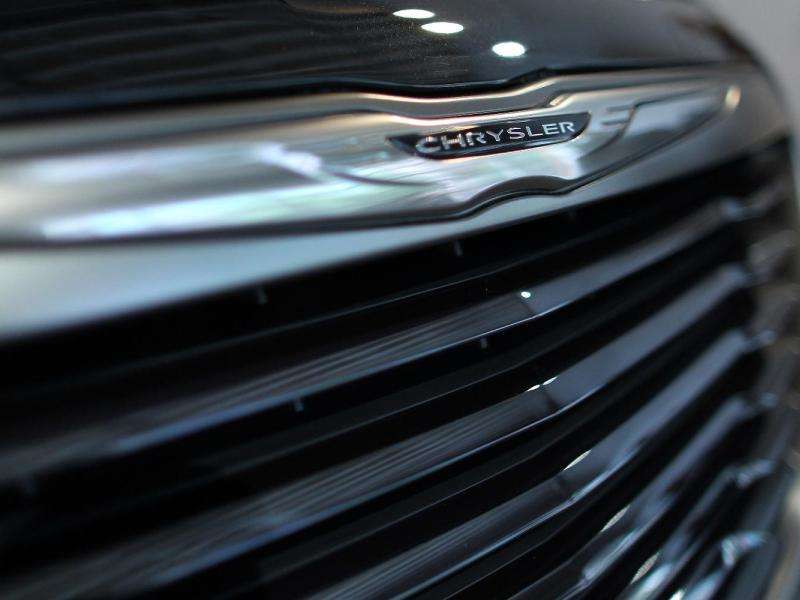
2014 Chrysler 300C Road Test & Review: Features & Controls
As tightly drawn and concise in appearance as the 300C is on the outside, the inside is quite spacious. That said, it also gives the impression of being considerably more spacious than it really is. This is not to say the car isn’t spacious, which it most assuredly is; what we’re saying here is it actually looks even more spacious than it already is.
Remarkably, even though the 300 houses an abundance of contemporary cutting edge technologies, the overall appearance is more traditional than avant-garde. Again, a story of contrasts, rather than looking old-fashioned, the interior looks thoroughly modern, while capturing the flavor of days gone by. The instrumentation features needles and dials, rather than the virtual instrument panels so many manufactures are employing these days. A nod to modernity comes in the appearance of the four-inch TFT screen between the speedometer and tachometer relaying comfort and convenience information to the instrument panel, rather than forcing the driver to look to the large monitor in the center console.
Taking full advantage of the real estate on the steering wheel, nearly every secondary feature on the 300 has a redundant control someplace there. Chrysler even takes advantage of the back of the steering wheel—placing controls for the audio system behind the wheel’s crossbar.
Another throwback cue is the analog clock sitting dead center at the crest of the center stack. Just beneath it, modernity reemerges in the form of the 8-inch touchscreen. Three large round dials just beneath it interact with the audio and climate control systems.
Tastefully simple wood and metallic accents warm and brighten the cabin, along with an abundance of elegant soft-touch materials. Taken in totality, the Chrysler 300C’s passenger compartment is well laid out, comfortable, and substantive.
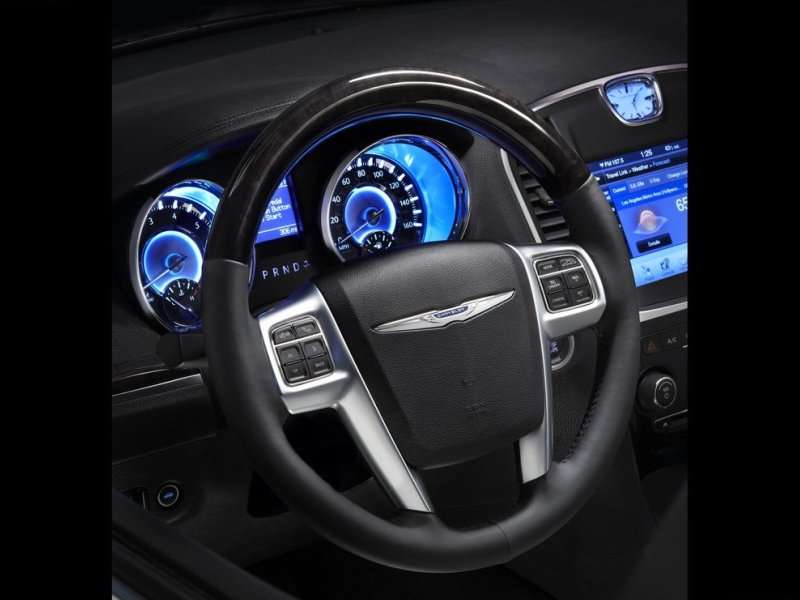
2014 Chrysler 300C Road Test & Review: Comfort & Cargo
Multi-adjustable seating for the driver and front passenger, with both heat and ventilation speaks to the concern Chrysler’s product team showed for the 300C’s occupants. The rear seats can be heated as well. We already mentioned the way soft-touch materials are employed. They are also strategically placed everywhere an occupant is expected to come into contact with the interior of the Chrysler. Armrests, the steering wheel, the center consoles, the window ledges, even the sides of the center stack housings near passenger’s knees.
And, while that “chopped and channeled” look might give you the impression the 300C is short on headroom, it is in fact, quite the opposite. Both spacious and airy—particularly when the panoramic sunroof is folded into the mix, claustrophobia and the Chrysler 300’s occupants have no acquaintance. Further, leg and shoulder room are first rate. Rear seat legroom is perfectly adequate, however owing to the rear drive architecture of the Chrysler, there is the need for a transmission tunnel, so the center rear seating position is—yeah, well just avoid sitting anyone there.
Storage abounds throughout the cabin, including a very deep center console. The trunk is more than capable of traveling a family of four with 16.3 cubic feet of cargo space. You do have to be strategic in your placement of cargo however as the rear wheel wells do intrude into the trunk area.
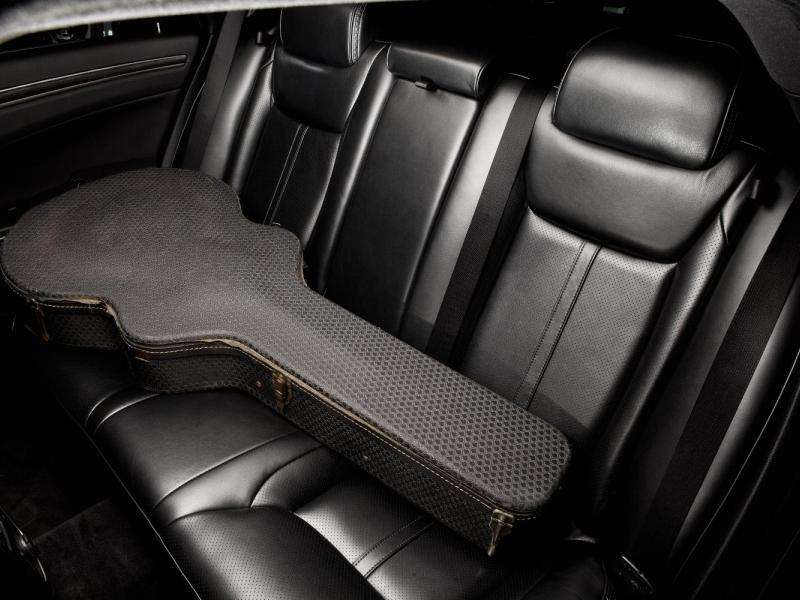
2014 Chrysler 300C Road Test & Review: Safety & Crash Test Ratings
The usual amalgamation of features are found in full force; ABS, traction control, stability control, front side airbags, side curtain airbags, a knee bag for the driver, and of course active front head restraints are on duty, just waiting to leap into action should some untoward circumstance necessitate their activation.
Some of the more cutting edge safety features like lane keep assist, and lane departure warning, have yet to find their way into Chrysler’s flagship; however you can get blind-spot monitoring, proximity sensors, smart cruise control, rear cross traffic alert, and forward collision warning.
Further, the Chrysler 300 is as tough as it looks. In crash testing, NHTSA awarded the 300 five stars in all categories. Similarly, the Insurance Institute for Highway Safety observed the 300 rated its top ranking (“Good”) in every category as well.
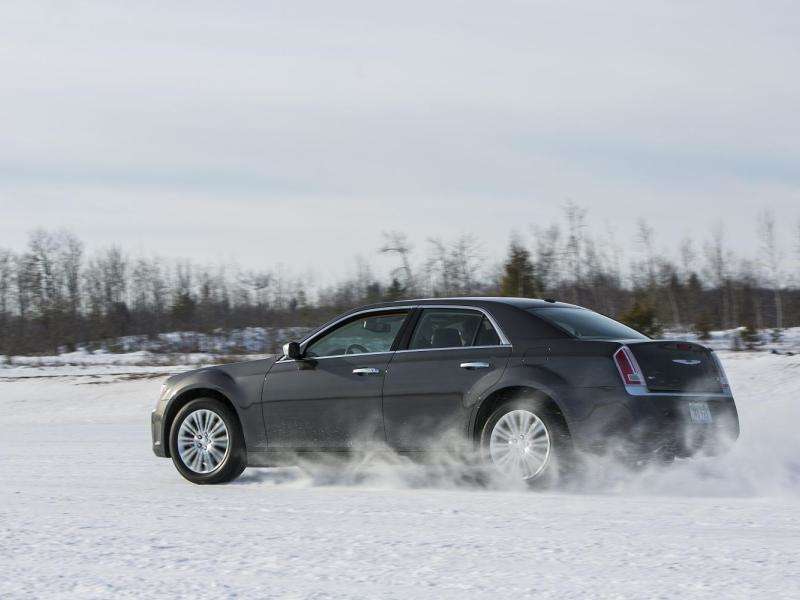
2014 Chrysler 300C Road Test & Review: Engines & Fuel Economy
Every version of the Chrysler 300, save the SRT 300, can be had with Chrysler’s 3.6-liter V6. This engine makes 292 horsepower and 260 ft-lbs of torque. In the 300S configuration however, the engine delivers 300 horsepower and 264 ft-lbs of torque, thanks to a cold air intake and a less restrictive exhaust system.
Chrysler offers an eight-speed automatic transmission with either version of the V6, as well as all-wheel drive. Fuel economy is estimated at 19 miles per gallon in the city and 31 on the highway with rear-drive; 18 in the city and 27 on the highway with all-wheel drive.
The 5.7-liter HEMI V8 in our 300C test car produced 370 horsepower and 394 ft-lbs of torque. We drove the rear drive version of the car, but all-wheel drive is available as well. Chrysler’s five-speed automatic comes with the 5.7-liter. Fuel economy is estimated at 16 in the city and 25 on the highway with rear-drive, 12 in the city and 23 on the highway with all-wheel drive.
If you’re going for all you can get, the 300 SRT’s 6.4-liter V8 comes with 470 horsepower and 470 ft-lbs of torque. A rear-drive proposition only, the SRT uses a five-speed automatic transmission as well. The EPA says you can expect to see somewhere around 14 miles per gallon in the city and 23 on the highway.
And, they all make their maximum power output on regular unleaded fuel.
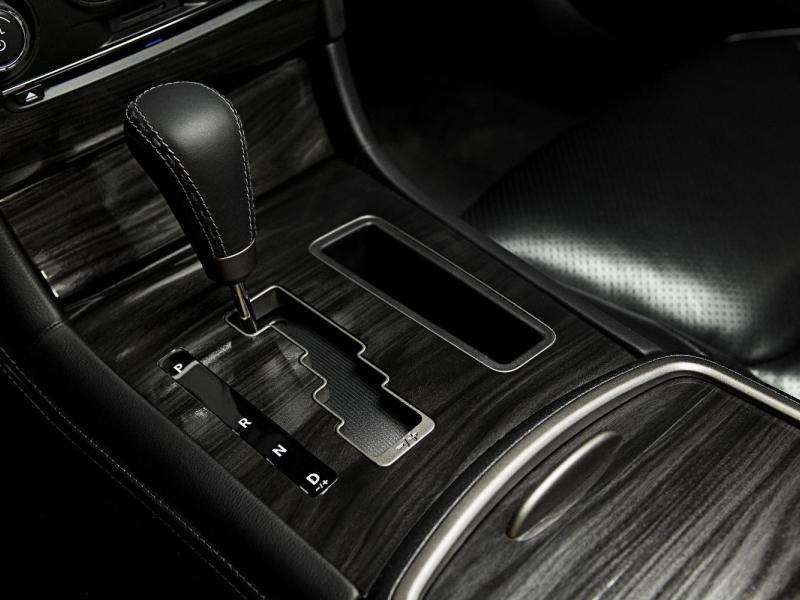
2014 Chrysler 300C Road Test & Review: Driving Impressions
It’s difficult to imagine a more well rounded driving experience.
In the city, the Chrysler 300C glides along quiet and smooth, with no untoward intrusions into the passenger compartment. You can actually see the pavement is rough and the Chrysler just soaks it up and moves on. This is not to say you don’t feel bumps and pavement irregularities, because you do. The thing is they aren’t shattering events the way they can be in more tightly sprung cars. Like those terrifically aloof land yachts of yore, the Chrysler just rolls along completely unperturbed by negative experiences.
Out on the highway, the Chrysler 300C will seemingly inhale seventeen miles of highway in one deep breath and blow them straight out of the back of the car. The stability, serenity, and sheer power of the Chrysler 300C on the highway is truly something to behold. This is a car that knows its American heritage and proudly lives up to it—albeit with a German-based chassis design (but hey, who’s counting?)
Get off the highway and find your way those last few miles to your destination on a two-lane with some curves thrown in and you’ll be amazed at the way the Chrysler shrinks to fit the situation. You’ll find yourself hurtling along with ease, as the 300C makes short work of every change of direction and goes clamoring toward the next opportunity to do so once again.
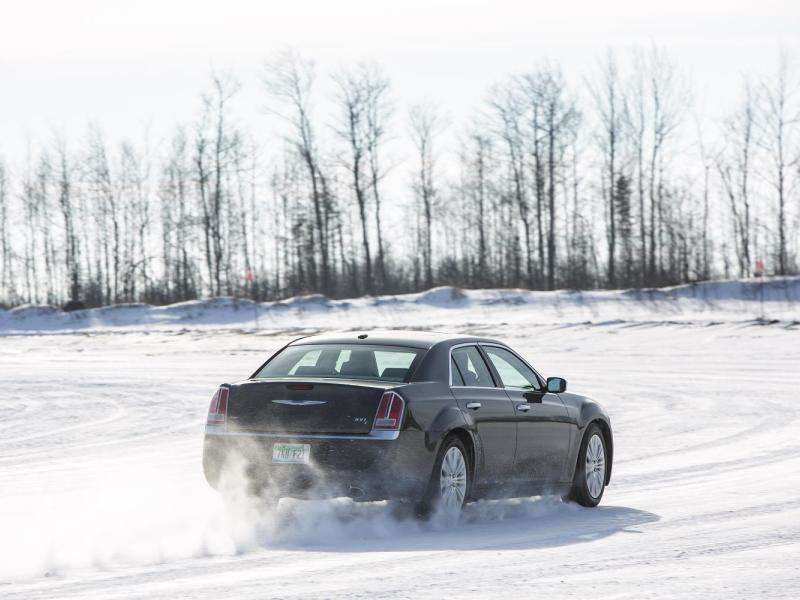
2014 Chrysler 300C Road Test & Review: Final Thoughts
Though it has been with us some nine years now, the 5.7-liter Chrysler 300C is still one of the best buys in a rear-drive V8-powered sedan out there. In fact, you’d have to spend considerably more money to get this configuration from any other manufacturer. What’s more, Ford doesn’t have one, GM only now has the Chevrolet SS coming on line and that model isn’t really a blend of luxury and performance the way the Chrysler is; and the Impala is front-wheel drive.
That just leaves BMW, Hyundai, Infiniti, Lexus, and Mercedes in the Chrysler’s relative category. And, believe it or not, the Chrysler undercuts the Hyundai on price for a rear-drive V8 model. Long story short, there’s no better value out there in a new V8-powered rear- or all-wheel drive automobile.
Yes, the aging five-speed automatic transmission Chrysler locks you into with the V8 is a bit long in the tooth, but it does an adequate job, and again, you can’t really beat the price. Factor in the handsome exterior, the comfortable interior, and the way it goes over the road, and you’ll find the Chrysler 300C makes a very compelling argument for itself.
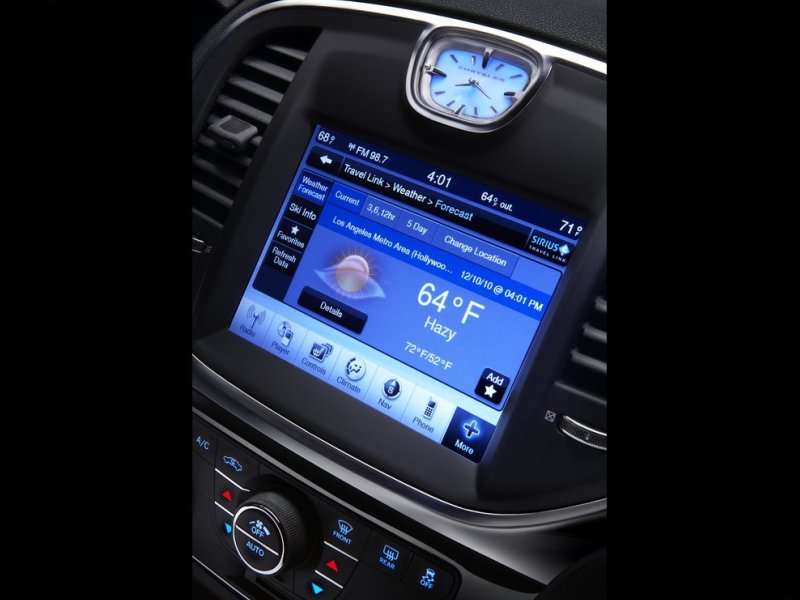
2014 Chrysler 300C Road Test & Review: Pros & Cons
Outstanding road manners, quiet, comfortable, handsome, excellent crash test scores, all-wheel drive…
Transmission getting old, fuel economy could be better, some modern safety features not available…
